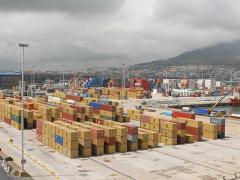As the third quarter (Q3) of 2025 unfolds, businesses globally are evaluating their positions during ongoing disruptions in the cargo and shipping industry, especially preparing for Q4.
Over-stocking as a method against under-preparation in the event of cargo delays isn’t necessarily the best of strategies, Xeneta’s Peter Sand says.
Near-sourcing and supply-line multiplicity are but some of the versatility deployments worth considering, the maritime intelligence platform’s chief analysts says.
In an article titled ‘Navigating Disruptions in Global Shipping in Q3 2025’, Eric Bailey of Cyclone Shipping highlights intelligent inventorising as one of five points to ponder.
Addressing the shifting balance of supply and demand, the CEO of the Arizona-based logistics company says shippers will have to master complex stock management as the rest of the year plays out.
While some industries are experiencing growth, others are in decline, making forecasting difficult, says Bailey.
Amid a context where wages are rising faster than inflation, consumer spending power is increasing – a positive sign for sales revenue. Yet, Bailey urges caution, as a surge in inventory needs could have ripple effects across global shipping, potentially amplifying supply chain disruptions.
This sentiment is corroborated by multiple supply chain experts and organisations.
Cloud-based resource planner, NetSuite, asserts that companies face challenges in calibrating inventory levels amid market volatility, advocating for a ‘just-right’ inventory approach balancing risk and cost.
Similarly, the Association for Supply Chain Management and auditing firm KPMG underscore the value of flexible inventory models and supplier diversification in mitigating unpredictability.
Also brought to bear is the transformative role of advanced technologies such as artificial intelligence and predictive analytics in optimising demand forecasting and supply chain resilience, say service providers Mecalux and Dassault Systèmes’ DELMIA.













